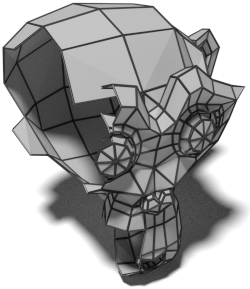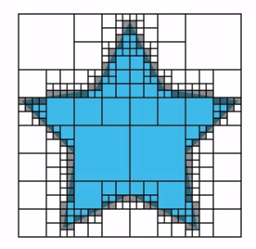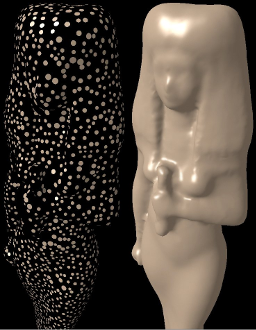Geometry in computer graphics is a virtual description of a physical object. 3D geometry is mostly constructed from 2D surfaces, often made up of many primitives such as polygons, triangles in particular. Triangle meshes are discussed in more detail here. Many geometry modelling packages allow defining smooth surfaces with splines, such as NURBs which are then approximated with triangles for fast rendering. Solid objects can be created by defining a bounding surface (boundary representation in solid modelling). We generally only see light bouncing off the surface of objects, not light passing through them, and so a large part of computer graphics is finding the intersections between empty and solid space, i.e. surfaces, rather than dealing with the interior of solid geometry. In fact it is common to avoid rendering the inside of solid objects as they are never seen and surfaces are often one-sided. Even when the interior is important, for example when rendering glass, the important interaction of reflection and refraction happens at the surfaces.

Voxels, like a 3D image, store a discretize representation of geometry, defining a regular grid of points in a 3D space as empty, solid or anything in-between. Voxels can describe properties of an object that change through the interior, for example different densities or colours. Directly rendering a grid based fluid simulation can be seen as voxel rendering. Memory requirements of voxels are typically high, although if only variation at the surfaces of objects are defined, called sparse voxels, some optimizations can be made. Voxels have some features giving competition to polygons.
Point clouds and particles are similar to voxels in some ways, although define properties at arbitrary points in 3D space, rather than on a regular grid. Point clouds as static geometry are often an input from 3D scanning devices, range finders and image processing. While they can be rendered directly, interpolating geometry between the points is difficult. Particles on the other hand are often animated and used as an inexpensive way to model “fuzzy” phenomenon such as smoke and fire.

